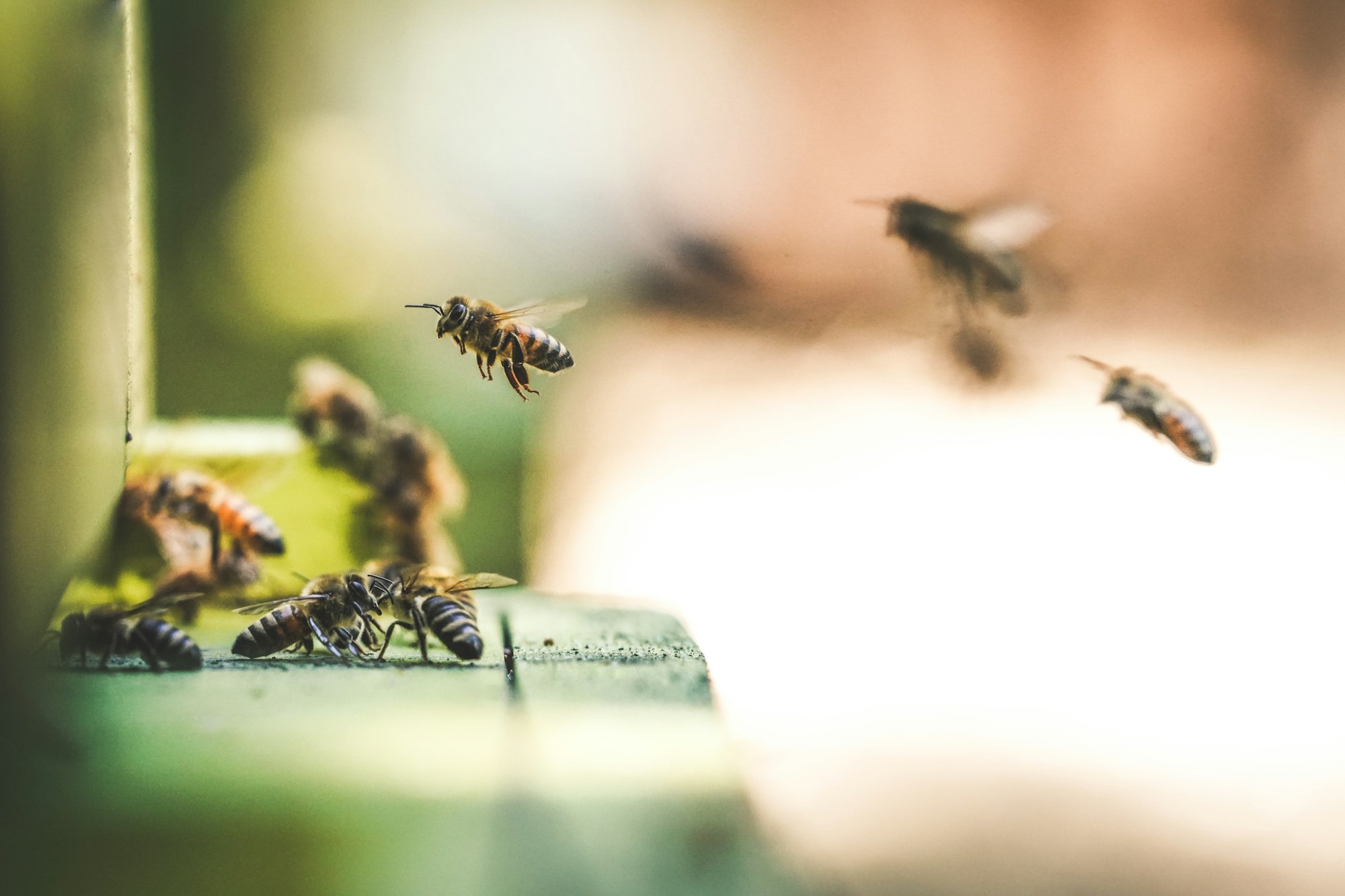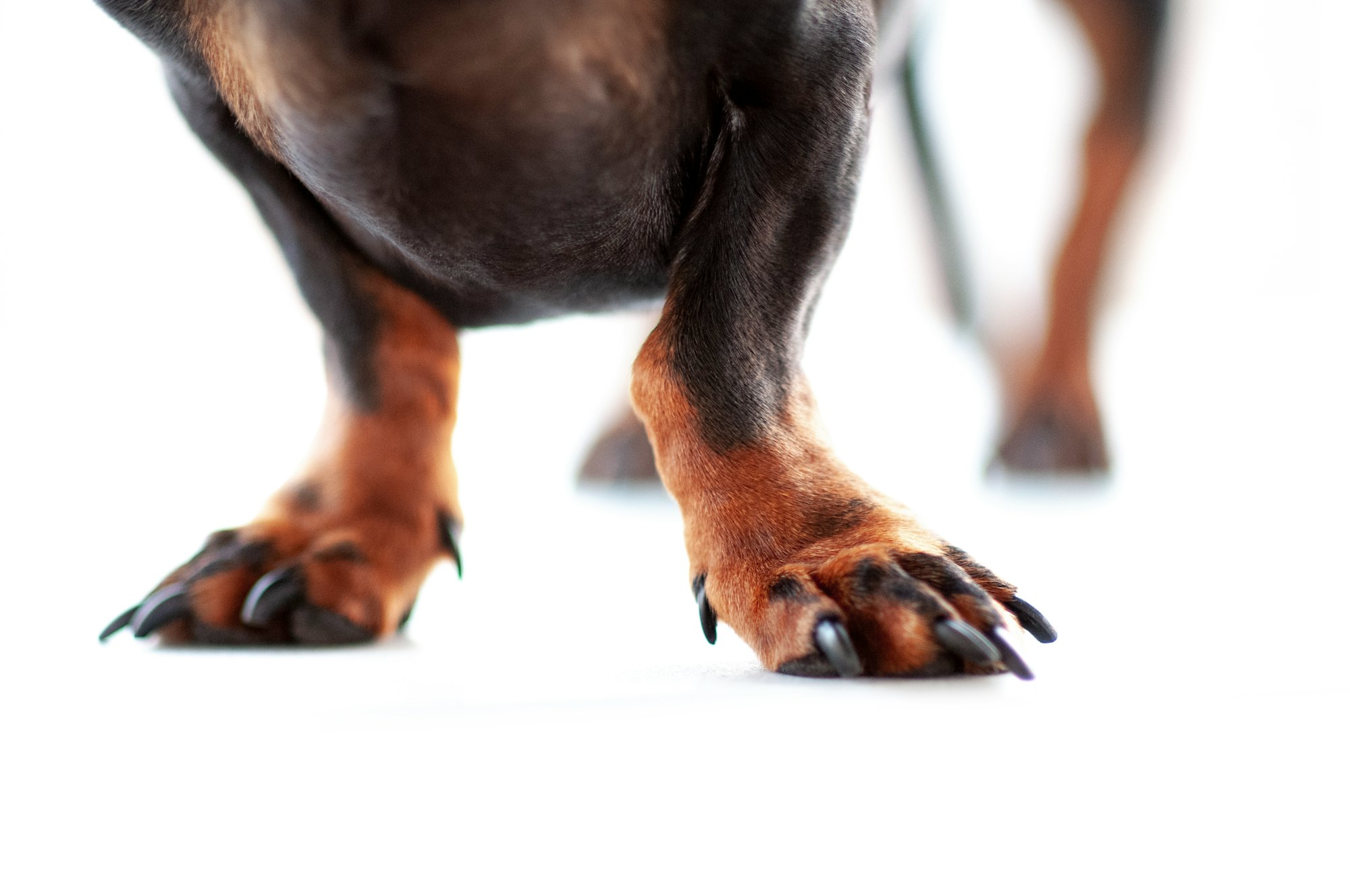It's a sunny day, and you've decided to have some fun with your dog in the backyard. Your furry friend is having the time of its life, chasing after toys, rolling in the grass, and being its usual playful self. Then, suddenly, you notice a change. Your dog yelps, starts limping, and you quickly spot the culprit: a bee. Panic ensues. My dog stepped on a bee; what should I do next? This is the question racing through your mind. Don't worry, we're here to guide you through it.
Recognizing the Symptoms
The first sign that your dog stepped on a bee is an audible yelp or sudden change in behavior. Just like humans, dogs can have a range of reactions to bee stings, from mild discomfort to severe allergic reactions.
- Immediate pain: Your dog might start limping or frequently licking the affected paw.
- Swelling: The stung area, often the paw, can become red and swollen.
- Allergic reactions: Symptoms can include difficulty breathing, vomiting, diarrhea, or even dog death in rare cases.

First Steps to Take
If you confirm that a bee sting is the cause of your dog's distress, here's what you need to do next:
- Stay Calm: Your dog will pick up on your emotions. Staying calm will also help your dog stay calm.
- Remove the Stinger: If it's visible, use a credit card or something with a flat edge to scrape it out gently.
- Apply a Cold Compress: This will help reduce swelling and provide relief.
- Monitor for Allergic Reactions: If your dog shows any severe symptoms, contact your vet immediately.
Treating Bee Stings at Home
If the reaction is mild, there are a few home remedies you can consider:
- Baking Soda Paste: Mix some baking soda with water and apply it to the sting. It helps soothe the pain.
- Oatmeal: An oatmeal bath can offer relief, especially if your dog has been stung multiple times.
When to See a Vet
While some dogs can shake off a bee sting like they shake their toys, others might need professional medical attention. If your dog shows signs of an allergic reaction or the swelling doesn't reduce after a few hours, it's best to seek veterinary advice.
Prevention is Better than Cure
To prevent future bee stings:
- Be Watchful: During bee season, keep an eye out for bees and wasps when playing outside.
- Train Your Dog: Just as we teach dogs about dog restaurant etiquette, it's worth training them to avoid chasing or snapping at flying insects.
- Maintain Your Yard: Regularly check for nests and get professional help to remove them.
Dealing with The Emotional Aftermath
After the immediate concern of the bee sting is dealt with, it's essential to address any anxiety or stress your dog might be feeling. Remember, dogs have memories too, and a painful sting can create a negative association with the outdoors or certain areas of your yard.
Rebuilding Trust with the Outdoors
- Re-introduce slowly: If your dog seems hesitant to step out into the yard where the sting occurred, start with short, supervised sessions. Gradually increase the time as their confidence grows.
- Positive reinforcement: Use treats and verbal praises when they explore the outdoors, redirecting their attention from the past painful memory to positive associations.
- Playtime: Engage in their favorite outdoor games. Using toys or playing fetch can be a great distraction and helps to re-establish the yard as a place of fun.
Emotional Support
Dogs, like humans, can benefit from emotional support after traumatic events. Here's how you can offer that:
- Quality Time: Spend some extra cuddle time with your dog. Physical contact can be comforting.
- Talk to Them: It might sound silly to some, but dogs often pick up on our tone and the comfort we provide through our voice.
- Consult a Professional: If your dog remains anxious or hesitant for prolonged periods, consider consulting a pet behaviorist or trainer.
Sharing Your Experience
One of the best ways to process what happened and potentially help other dog owners is to share your story. Whether it's on a pet-focused blog, social media, or among your community of pet owners, your experience can offer insights and support to others who might face similar challenges.
For instance, a story about how you tackled the situation can be invaluable for a new dog owner who might be browsing the internet, looking for advice in a panic after their pet had a run-in with a bee. Your narrative can serve as guidance and solace.
Joining Online Communities
There are countless online forums and groups where dog lovers share their stories, seek advice, and support one another. By joining these communities, you can both learn from others and provide your unique insights based on personal experiences.
Lessons Learned and Moving Forward
The unexpected events we face with our pets, like the sudden distress of a bee sting, are part of the shared journey. These experiences not only teach us about our pets' needs but also about our growth as pet owners.
Educating Others
Once you've gone through the experience and taken the necessary steps to ensure your dog's safety and well-being, consider sharing your newfound knowledge. Teach kids in your household about the signs and responses to bee stings. Kids often play an active role in a pet's life, and ensuring they're equipped with this knowledge can be a lifesaver in your absence.
Future Outings
Planning trips or outings after such an incident can seem daunting. Whether it's a simple day out at a park, a meal at a dog restaurant that offers etiquette-friendly spaces for pets, or even trips to areas with dense vegetation, taking precautions is essential.
Always check the environment before letting your dog roam free. Scout the area for potential hazards, like bees or other insects. Over time, and with several positive experiences, both you and your pet will regain confidence in your adventures together.
Expanding the First Aid Kit
This experience is a stark reminder of the unpredictability of pet ownership. Augment your pet's first aid kit with remedies suitable for bee stings. Having these remedies on hand can offer immediate relief and buy crucial time if a vet visit is necessary.
Bonding Over Shared Challenges
While no one wishes for their dog to experience pain or discomfort, overcoming challenges together can fortify the bond between owner and pet. Every time your dog looks up at you with those trusting eyes, it's a silent testament to the trust they place in you. Whether they're playfully shaking their toys or seeking comfort after a stressful event, they turn to you.

The Larger Context: Nature and Dogs
Nature is a wonderful playground for our pets, but it's also fraught with little dangers that we, as pet owners, should be mindful of. From the intoxicating colors of autumn leaves to the icy fun of winter, every season presents its unique challenges and joys.
Respecting Nature
Bees, for instance, are not the enemy. They're vital pollinators and a crucial part of our ecosystem. The incident with your dog is merely a collision of two worlds: the domestic and the wild. Instead of fearing nature, learn to understand and respect it. Knowing more about the environment can go a long way in ensuring that your pet's interactions with the natural world are safe and enjoyable.
Other Natural Hazards
Bee stings might be today's concern, but nature has other elements that our dogs might encounter. Here are a few:
- Toxic plants: Many plants that are harmless to humans can be toxic to dogs. Research common plants in your area and ensure your backyard is free of such threats.
- Wild animals: Depending on where you live, your dog might encounter other animals. Teach your dog recall commands to prevent potential confrontations.
- Natural water sources: While it's fun to see our dogs splash around, stagnant water can house bacteria and parasites.
The Role of Training
Training goes beyond the usual sit, stay, and fetch. It's about equipping your dog with the skills needed to navigate the world safely. From recognizing faces in a crowd to avoiding potential threats, consistent training can be a lifesaver.
For instance, you can train your dog to stay away from certain areas or objects on command. This can be useful in various scenarios, whether it's a bee on the ground or a piece of food that's not safe for them to eat.
Building a Support System
A network of fellow dog lovers can be invaluable. Whether it's the owner of rescue dogs down the street or a group of pet enthusiasts online, these connections can offer advice, comfort, and resources. Swap stories, learn about other potential dangers, and always have a helping hand (or paw) nearby.
Harnessing Technology: The FI Dog Collars
In our ever-evolving journey with our beloved pets, we often rely on tools and gadgets to ensure their safety and well-being. With incidents like bee stings highlighting the unpredictable nature of the outdoors, it's worth exploring how modern technology can help. Enter the FI dog collars.
Respecting Nature with a Helping Hand from FI
While it's essential to understand and respect nature, the FI dog collar provides an added layer of security. The collar uses cutting-edge technology to track your pet's movements, ensuring that even in the vast outdoors, you have an idea of where your canine companion is. If they're getting too close to a known bee hive or another potential hazard, a quick recall can prevent any unpleasant encounters.
Training and the FI Collar
Training is pivotal in ensuring your dog's safety. The FI dog collar can serve as an excellent tool in this regard. Its tracking capabilities allow you to set boundaries for your dog. If they go beyond these boundaries, the collar can send notifications, enabling you to intervene before they venture too far or into potentially dangerous zones.
Moreover, with its activity tracking, the FI dog collar can give insights into your dog's behavior, helping you understand what they might be attracted to or what's causing distress, ensuring a more focused training approach.
A Support System Enhanced by FI
While having a community of fellow dog lovers is invaluable, the FI dog collar adds another dimension to this support system. With its location-sharing capabilities, in emergencies or situations where you can't reach your pet, a trusted neighbor or friend can locate and ensure your dog's safety. Whether it's a quick dash towards a dog restaurant or a more serious situation like a bee sting, immediate intervention can make all the difference.
Conclusion:
The distressing experience of a dog stepping on a bee can catch any pet owner off-guard. Immediate and appropriate action is crucial to ensure the well-being of your furry friend. Firstly, it's essential to remain calm and act swiftly to remove the stinger, if present, from the affected area. Monitoring your dog for signs of an allergic reaction or severe pain, and seeking timely veterinary care, can make a significant difference in their recovery.
Regularly inspecting play areas and being aware of the surroundings can help prevent such incidents. Being prepared with a pet first aid kit and knowledge of basic first-aid measures is invaluable. Always prioritize your dog's safety and comfort, and consult a veterinarian when in doubt.

